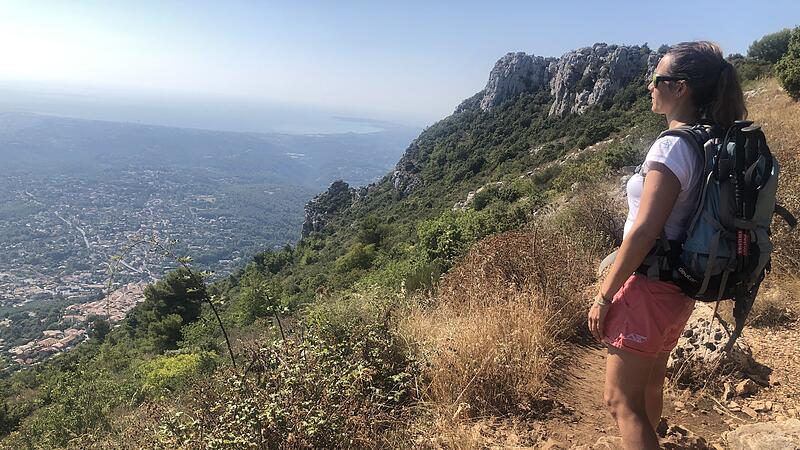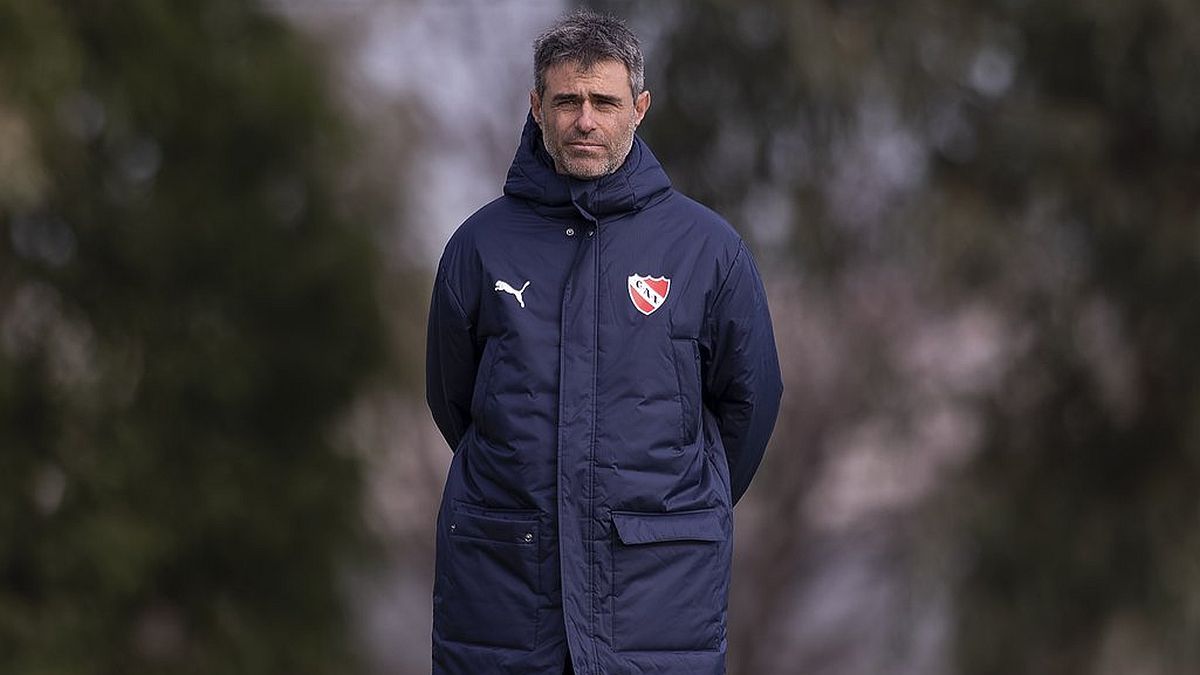It had to be done quickly. They pounded down the slopes, stowed their skis in the trunk and swapped their winter jackets for wetsuits. From a height of over 2000 meters it went down into the valley – to the sea. There the very young Sauveur and his friends roared across the azure blue water with two boards. “It was an adventure, a little challenge,” says the now graying chauffeur as he drives up the serpentine road to Isola 2000 in the Alps. “But if you have the opportunity to ski on the slopes and at sea in one day, why not?”
Sauveur is lucky. He grew up where others spend their vacation. In Nice. The city on the French Riviera is known for its extensive beach promenade, adorned with blue benches and magnificent palm trees, as well as for its colorful buildings and mild climate. “It’s the Mediterranean way of life,” says Anne Berthelot from the Nice Côte d ?? Azur tourist office. “The food, the sea, the mountains – that’s what makes this region so special.”
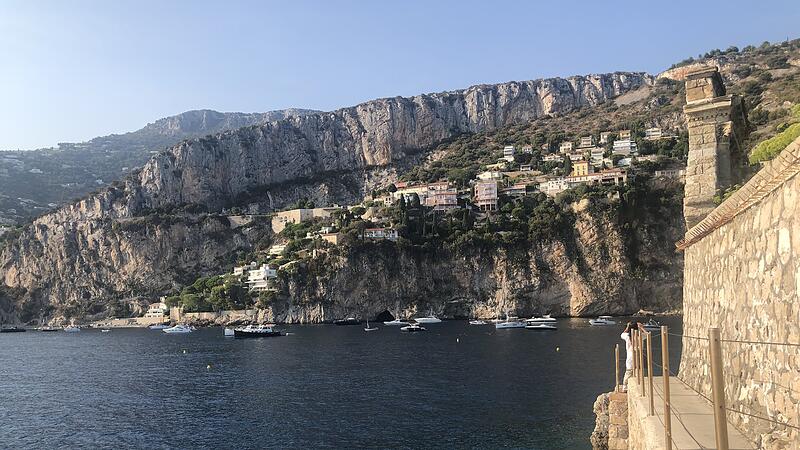

A walk on the coast of the “Lou Camin Nissart” shows Nice in all its facets. The marked circular route extends for a total of 42 kilometers and leads along cliffs, forests and viewpoints such as the Mont Boron hill. On its paths you can see the French Mediterranean coast on the left, the peaks of the Southern Alps on the right and the terracotta-colored roofs of the 350,000-inhabitant city from a bird’s eye view. This lovely view should also have done Elton John. Those who follow the yellow and red stickers will catch a glimpse of the British superstar’s vacation home. Villas and yachts can be found between Monaco and Saint-Tropez like pebbles by the sea. A completely contrary world opens up behind the facade. A world away from the jet set. With its delightful mountain villages, wild herbs and steep cliffs, the hinterland of Nice is a Mecca for nature lovers and active vacationers.
The guard over the village
“There is no frost here all year round,” says mountain guide Lisa during a hike on her local mountain. The rock towers 400 meters above the medieval village of Saint-Jeannet near the artist Eldorado Vence. Its striking silhouette is omnipresent in the Nice region. Even in the vineyards on the opposite side of the Var valley, the “Baou de Saint-Jeannet” is always present.
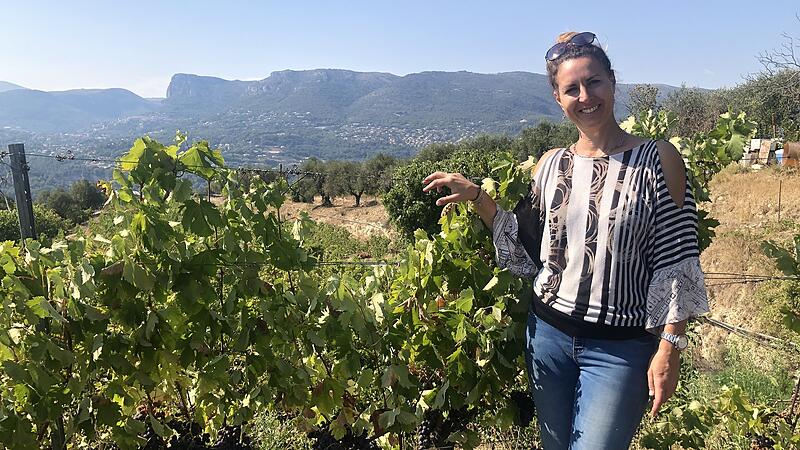

Its flank is one of the first accessible climbing routes in the Alps. The path that meanders to the so-called “Baou” plateau is less demanding. “That is an old word and means rocky mountain,” explains Lisa, pointing to a large limestone along the way. A closer look reveals another piece of history: The letters “RIP” (in English: “rest in peace”) are engraved in the rock. What this is all about remains a mystery to this day. Locals speculate that the engravings date from the 14th century and were dedicated to a deceased shepherd. The mountain once served as a habitat for numerous flocks of sheep. Forage and hay were transported to the animals on wheels.
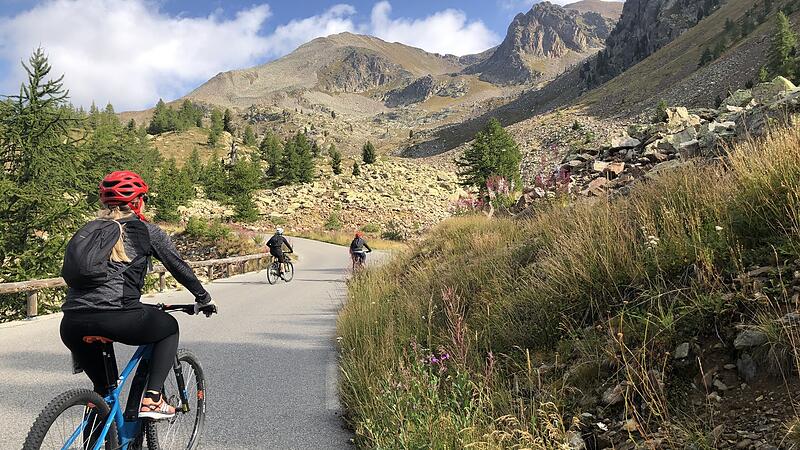

Miraculix, is it you?
The hikers are now enjoying the wide, stone-secured path. On the ascent and descent, you will also be rewarded with a distant view of the sea and the scent of Mediterranean herbs. From thyme and savory to mint and lavender. They are the specialty of Christophe Cottereau, who in the 200-inhabitant village of La Tour sur Tinée can usually be found with a warm smile and no corpses. The French are known for their essential oils and soaps. He wanted to return to a simpler and healthier life, says the trained environmental engineer. Now nature is his place of work. Christophe is holding a bag in his hand as he heads for the village square in the early morning. “Bonjour,” he calls out and unwraps his souvenirs. The small bottles are labeled “Lavender oil, 1800 meters above sea level”. The herb farmer harvests all of his valuable raw materials in alpine locations. In Miraculix fashion, he conjures up natural remedies and fragrances, practically on his doorstep.
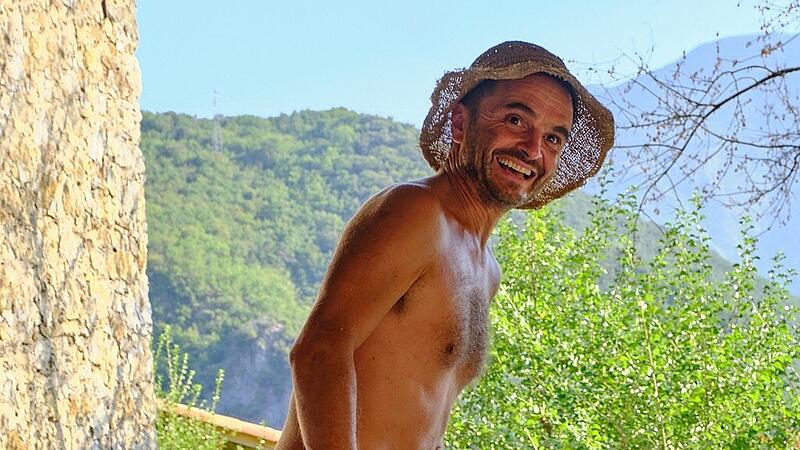

Christophes hometown La Tour sur Tinée is located on a ridge above the Tinée valley. An octagonal fountain on the paved “Grand Place” forms the center, all around is village life. At the Greissler with its outdoor dining area or at the hotel, which the locals particularly appreciate for its excellent cuisine. The tranquility and warmth that the place exudes quickly cast a spell over those who are not. “That’s what I was looking for,” says an elderly lady in High German. It has been three decades since the woman from Munich found a new home in the hinterland of Nice. At 81 years of age, she is now one of the older residents. “The village is growing. It attracts a lot of young people,” says Deputy Mayor Sylvain Pavesio.
Away from the vortex, up into the idyll. This is also what tourists long for who are looking for a sporty balance between sightseeing and the beach – on foot or on wheels.
By bike to Italy
This time Sauveur is not going to Isola 2000 to ski. His travelers have set their sights on a different destination: Italy. The Col de la Lombarde marks the state border, which is around 350 meters above the cable car station. Aside from the winter season, all sorts of bikes roll over the pass road: motorcyclists and professional athletes – the Tour de France first crossed the pass in 2008 – as well as e-bikers. In view of the flora and fauna, it’s worth shifting down a gear and keeping your eyes and ears open.
Garnelen im Après-Ski-Flair
It whistles, it rustles. A family of marmots watches the group of cyclists. Cell phones and cameras are immediately pulled out. Philippe grins. As a guide in the Mercantour National Park, he often meets the shy rodents, as well as chamois and ibex. The stage to the border pass offers a foretaste of the Nice wilderness: three-thousand-meter peaks, surrounded by lush green, scree and an extensive network of trails.
The fresh air at an altitude of almost 2400 meters gets under your skin. After the descent, the lunch break is just the right time. The chosen restaurant is like an après-ski hut. Fairy lights dangle from the gable roof and decorate the wooden facade. Only the menu makes it clear that you are not at an Austrian ski hut, but near the sea: instead of hearty Kasnockn, king prawns and calamari are served. It is a culinary preparation for an afternoon excursion to Plage Mala, a romantic beach bay on the border with the Principality of Monaco. Once there, the sports pants and trainers are exchanged for bikinis and slippers. A day tour in the footsteps of Chauffeur Sauveur, just a little different.
Nice
The Nice Côte d ?? Azur region consists of 80 percent mountain landscape and is divided into coastal, central and highlands.
More than half a million people – 563,000 – live in Nice and the surrounding area. Five million tourists visit the region every year. The city, which is called “Nice” in the local language, is the fifth largest city in France, its Mediterranean coast is ten kilometers long, 7.5 kilometers of which is used as a beach. The distance to the Principality of Monaco is about ten kilometers and the Italian border is 30 kilometers.
The low-cost airline WizzAir will be flying regularly from Vienna to Nice from spring onwards. From April, three flights a week are planned – Tuesdays, Thursdays and Saturdays. wizzair.com
Source: Nachrichten

